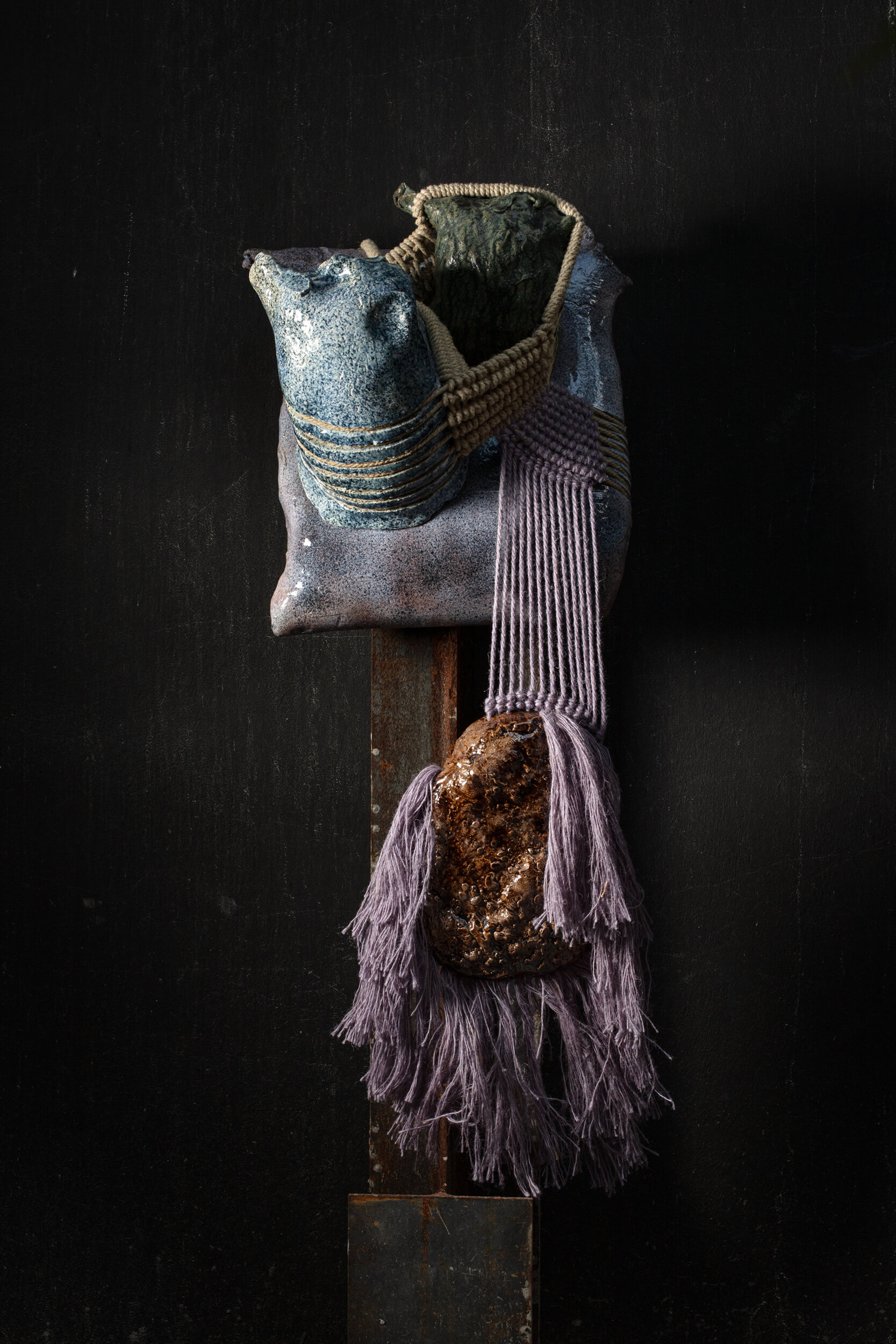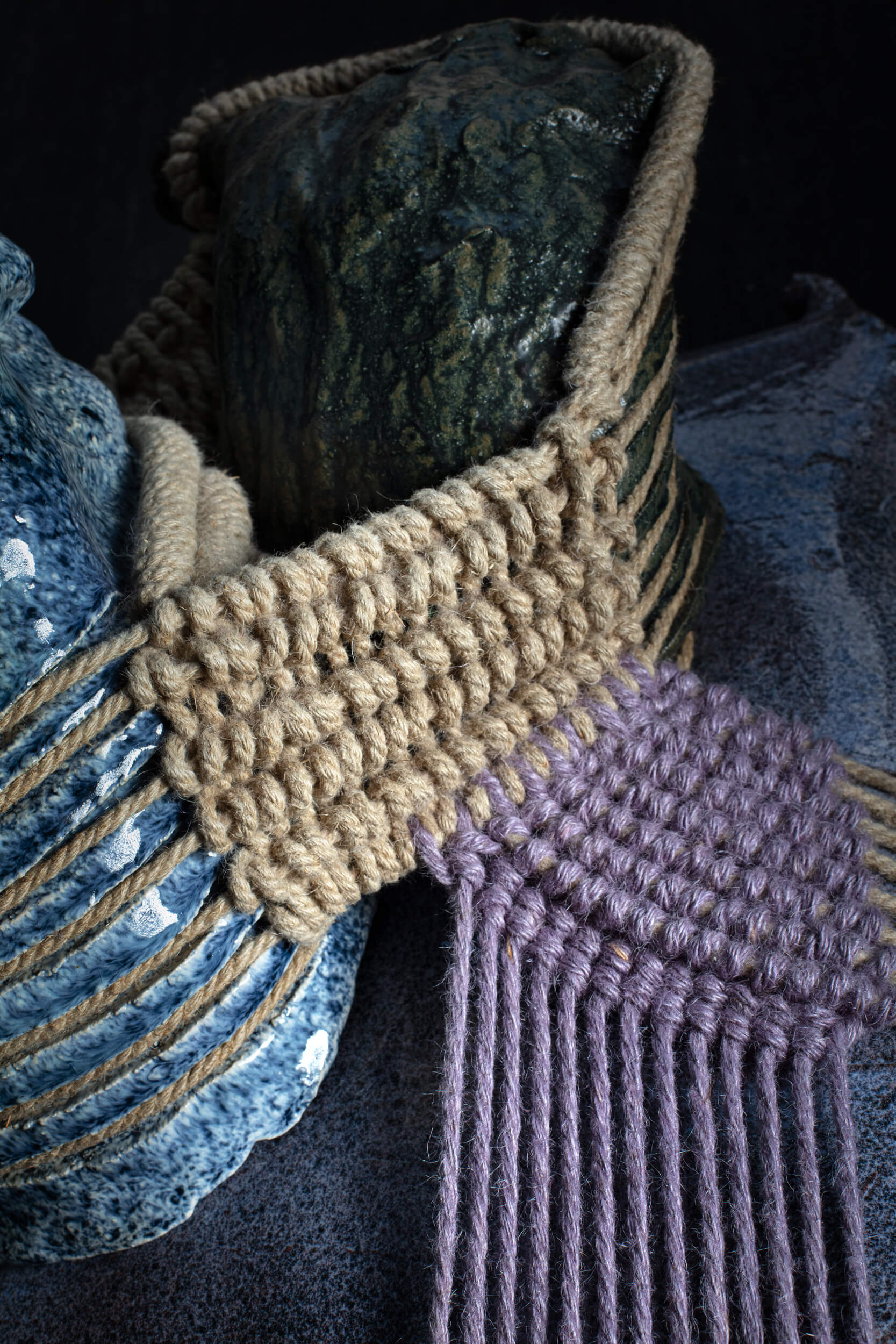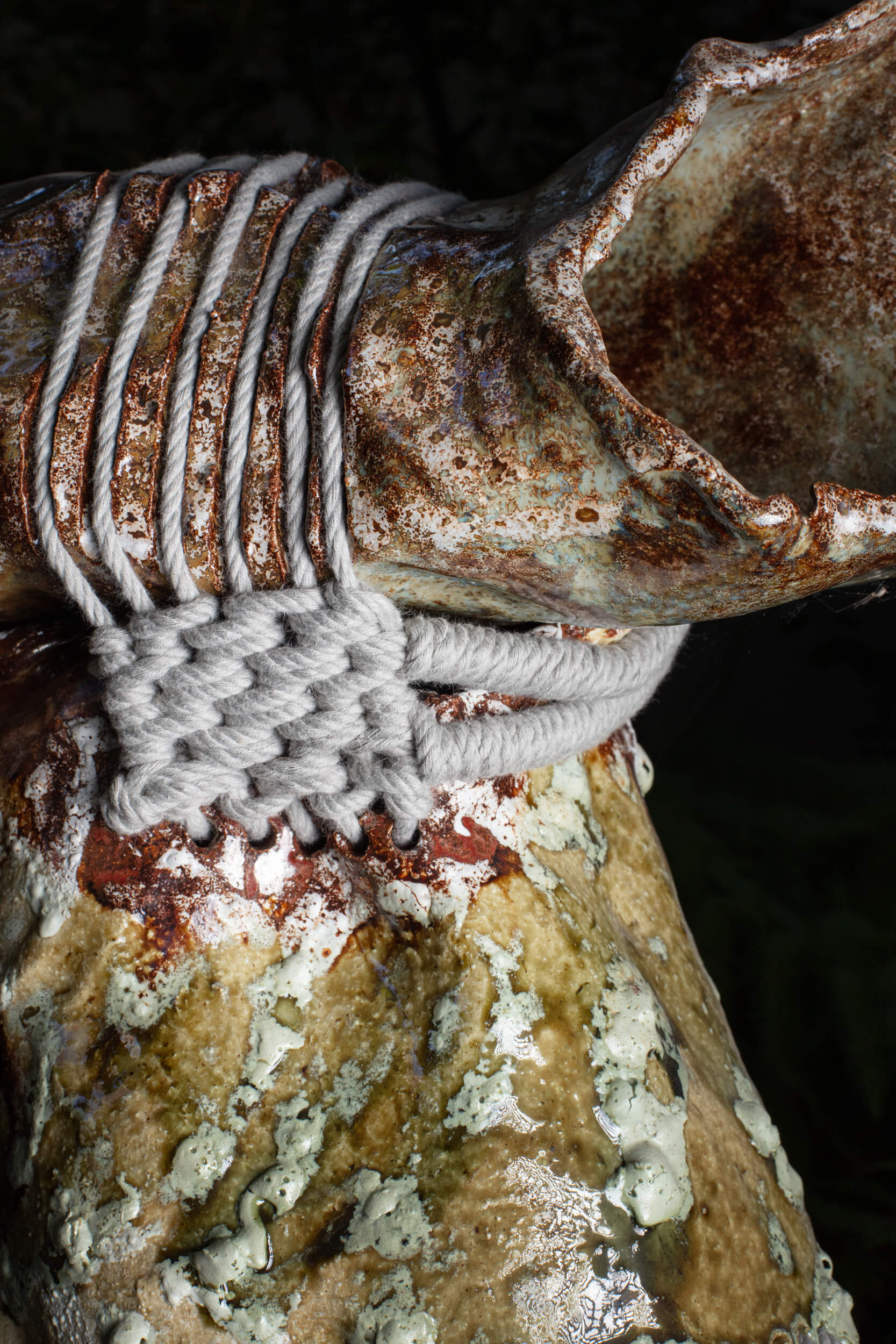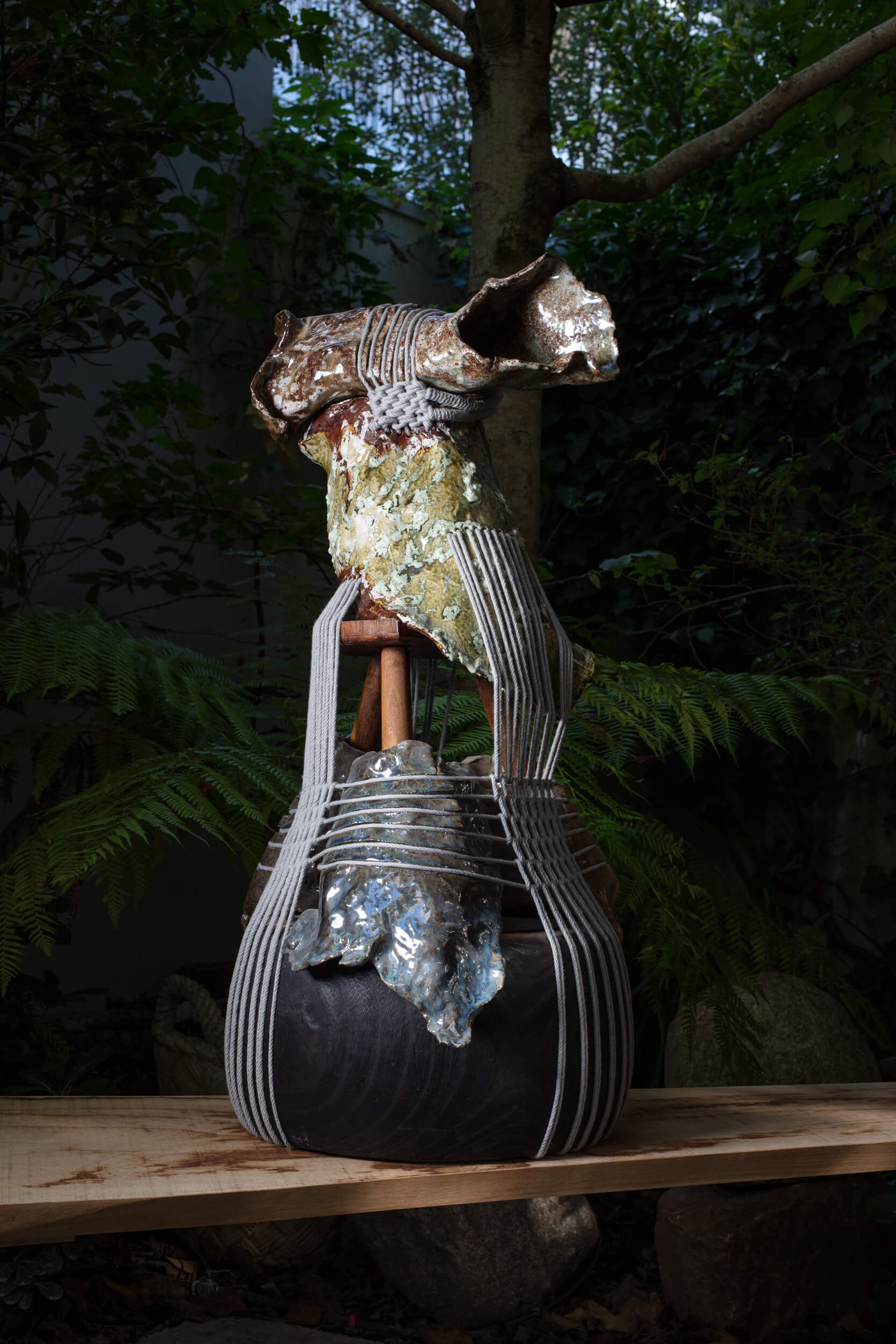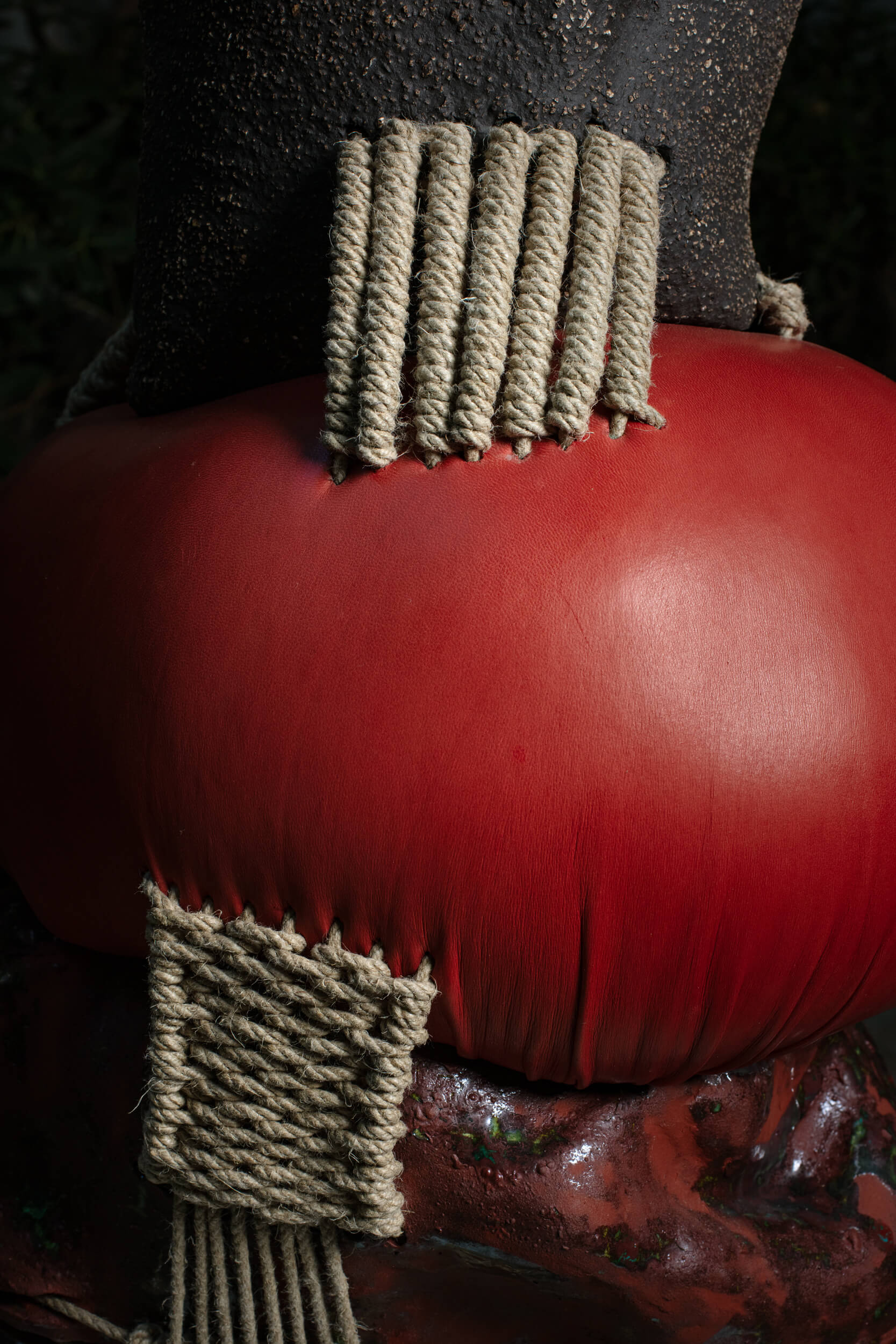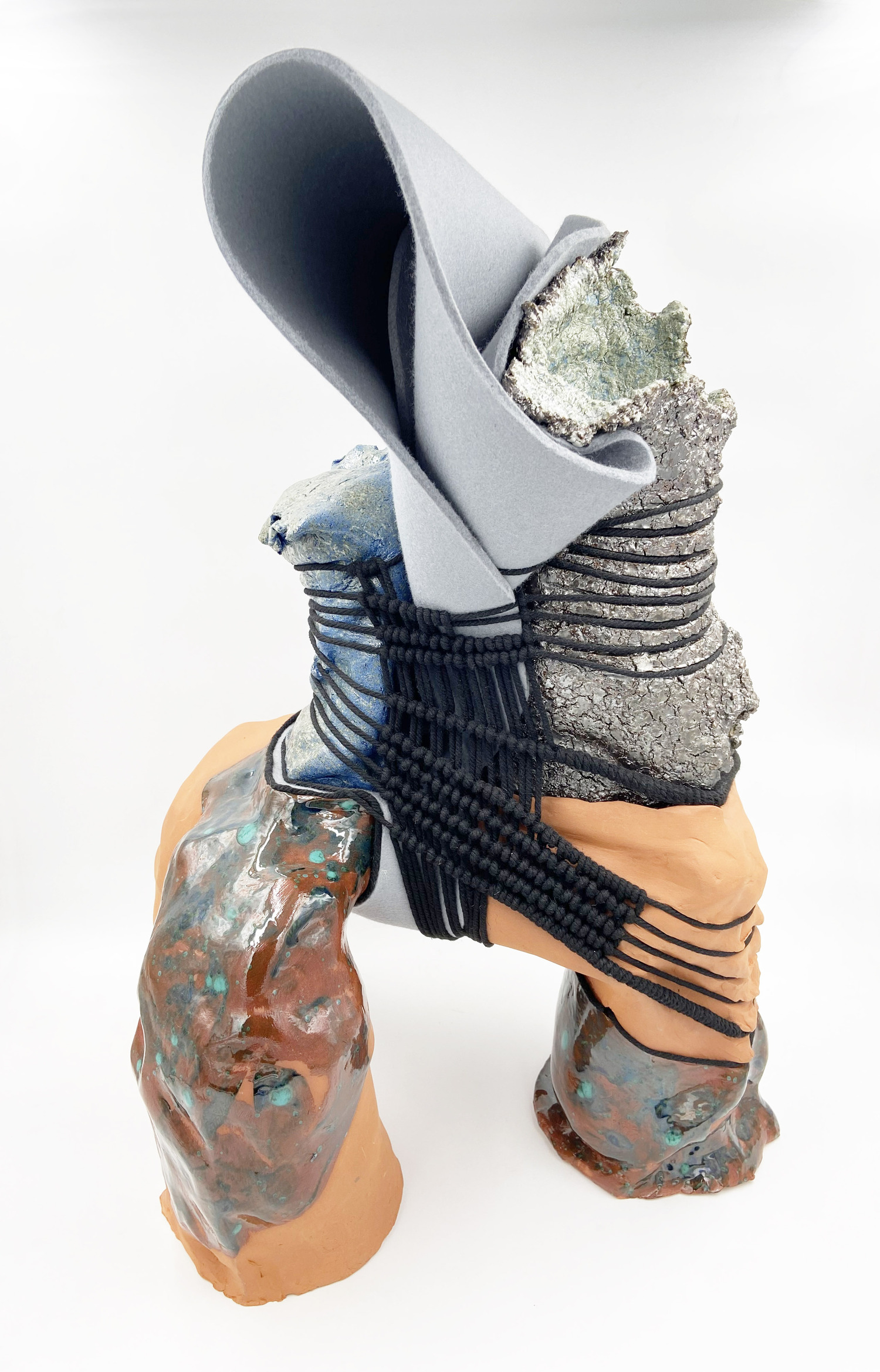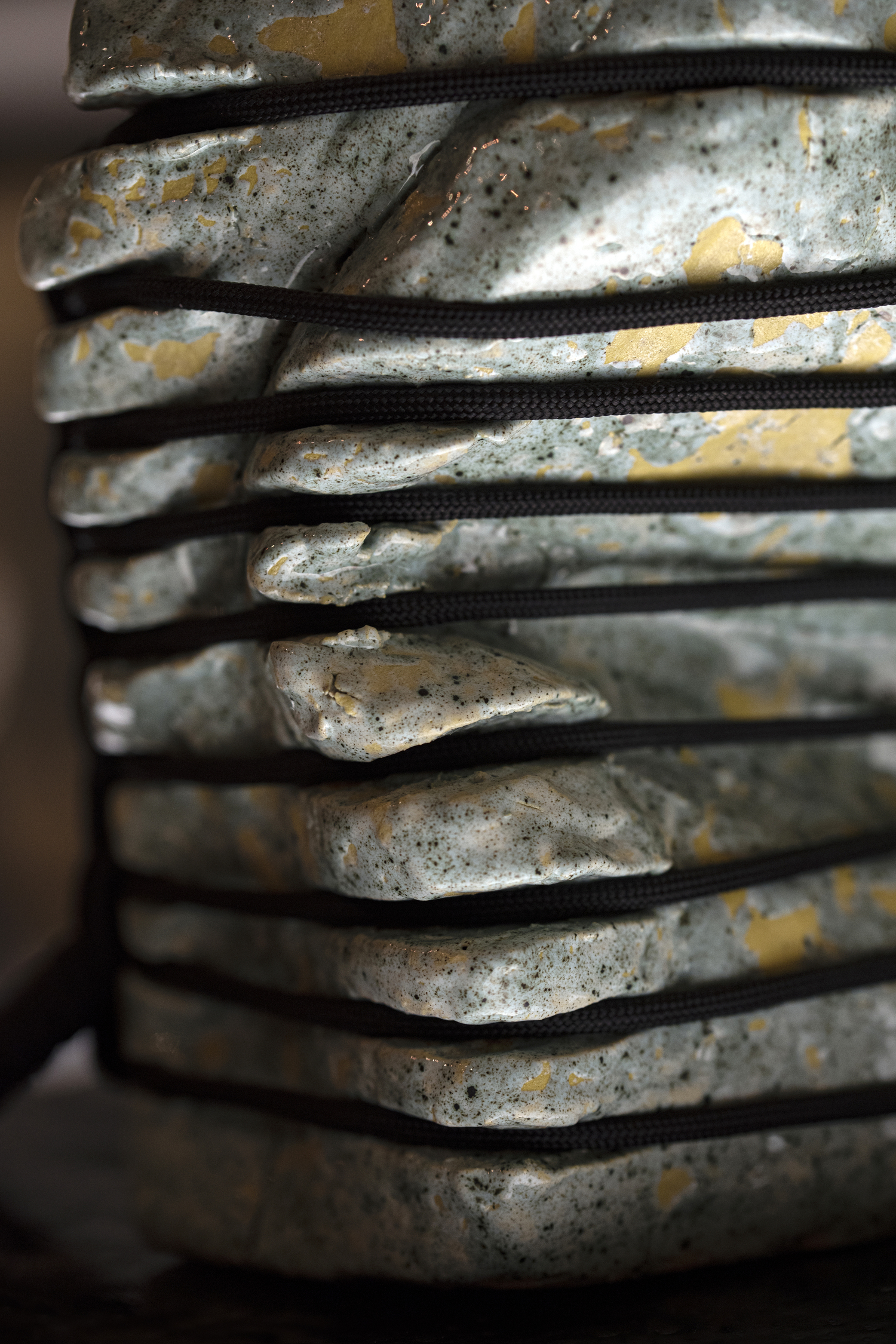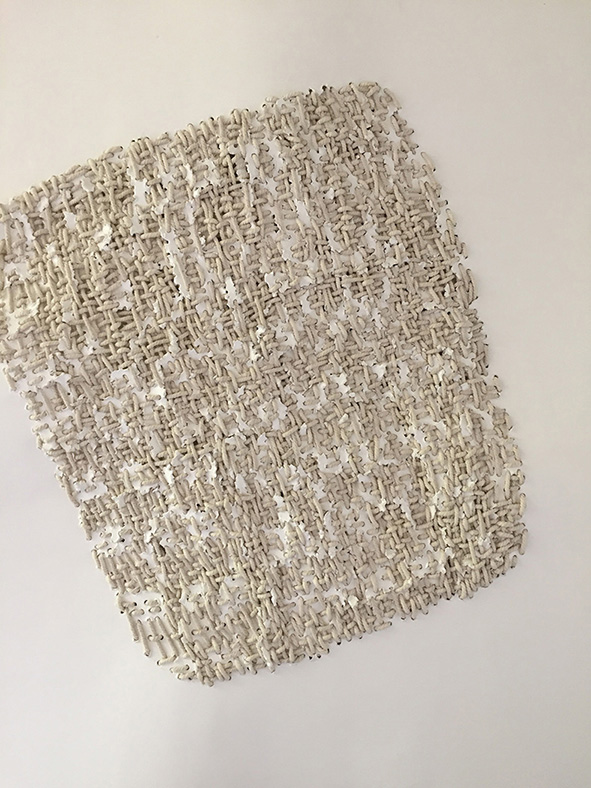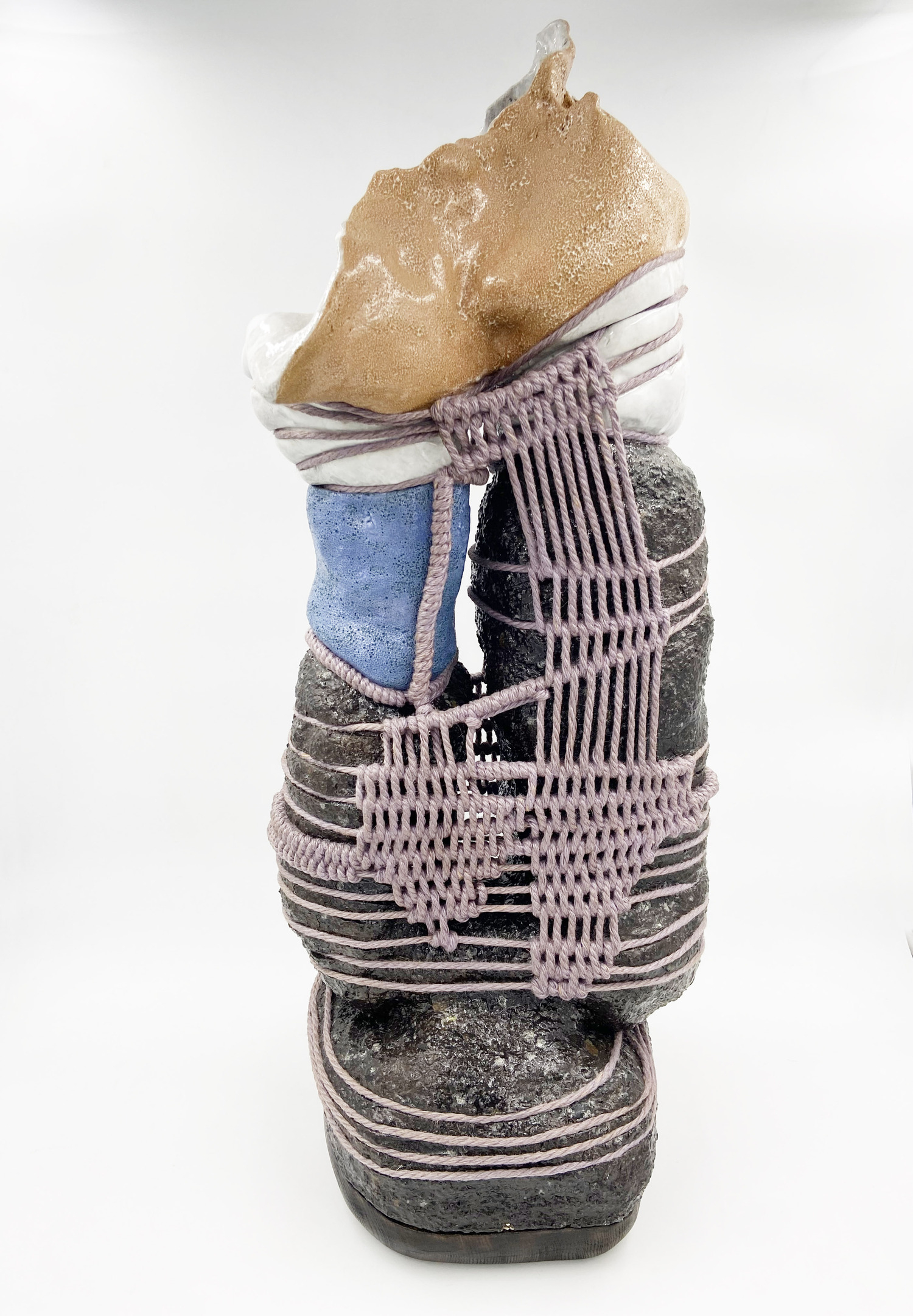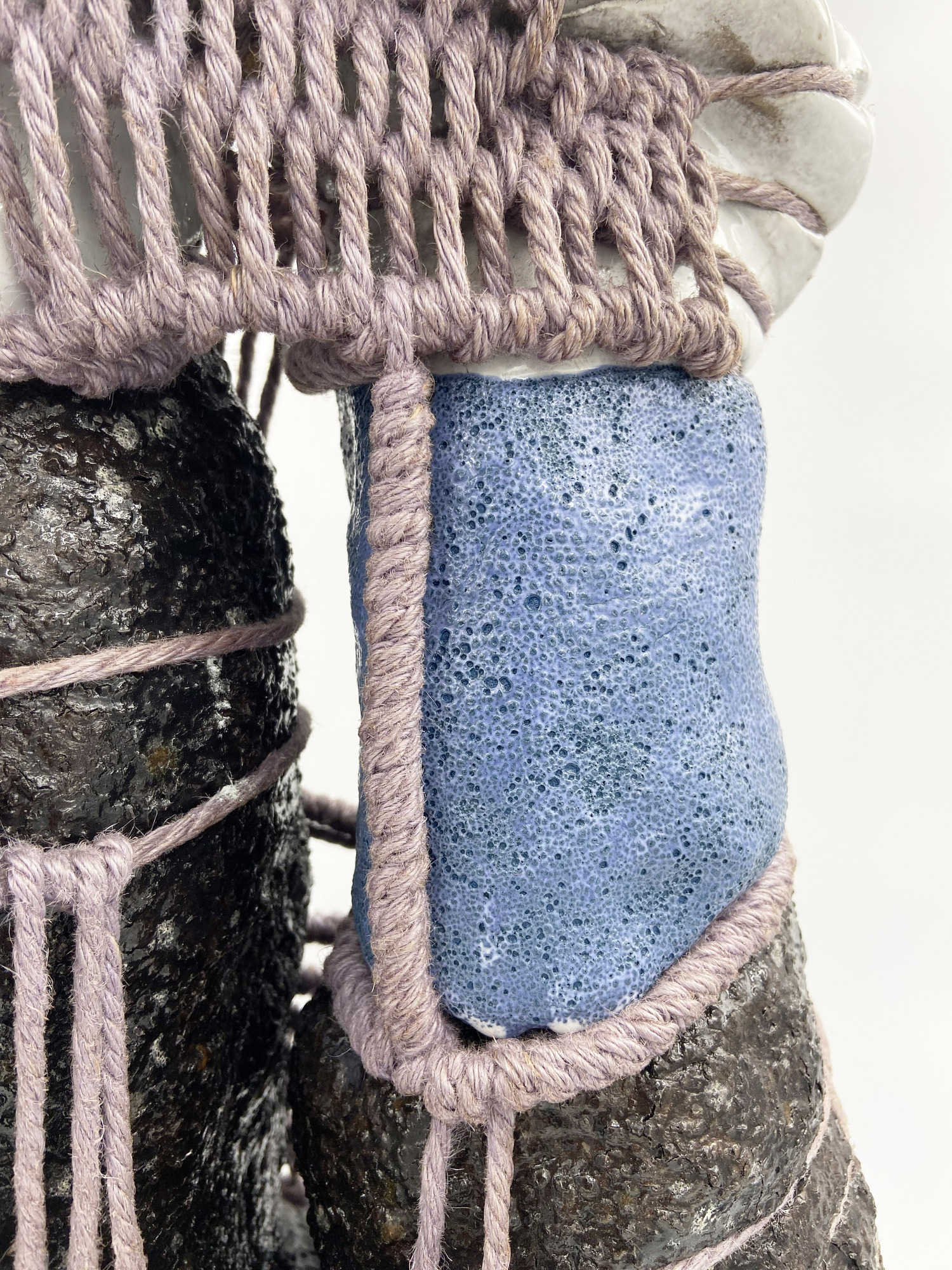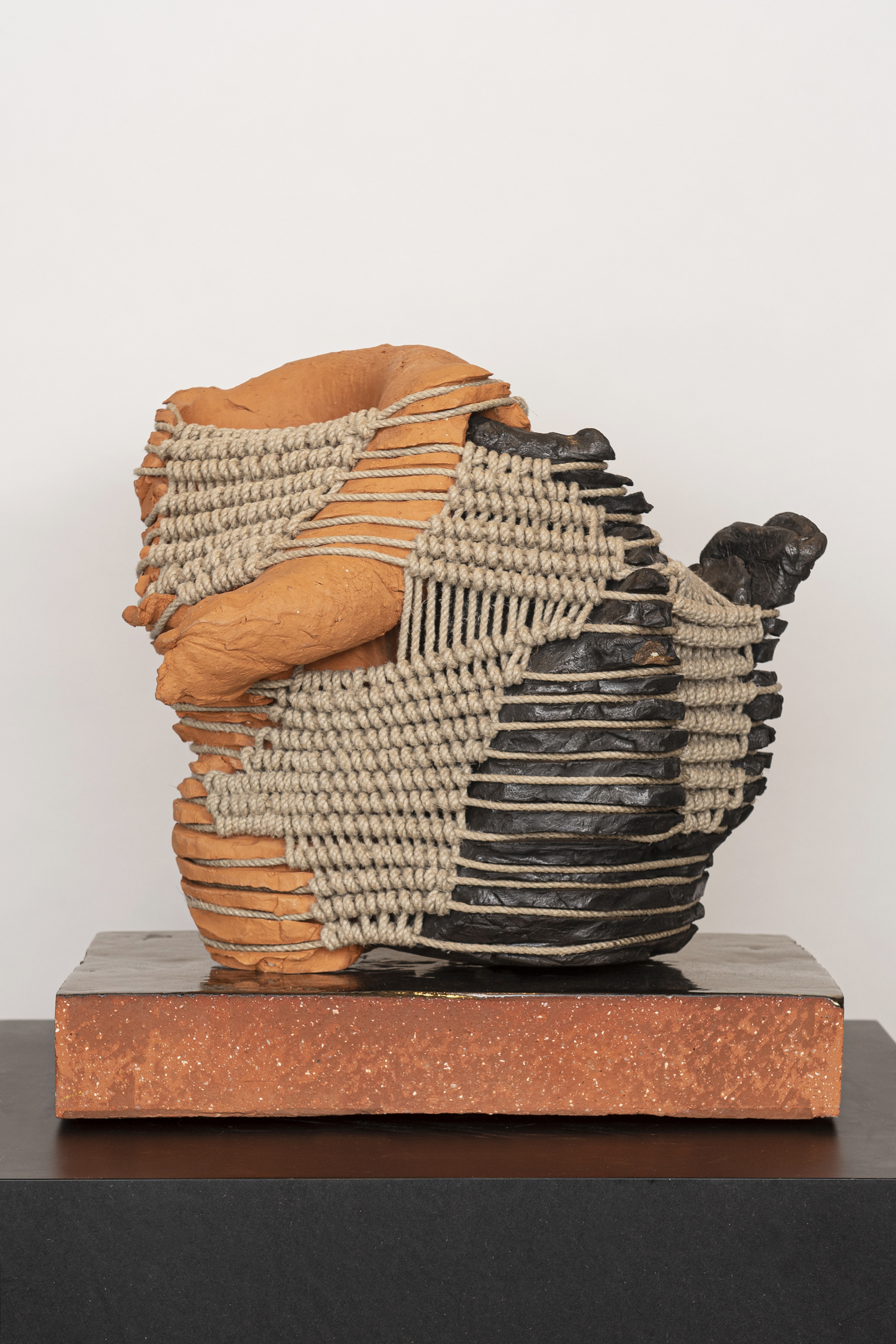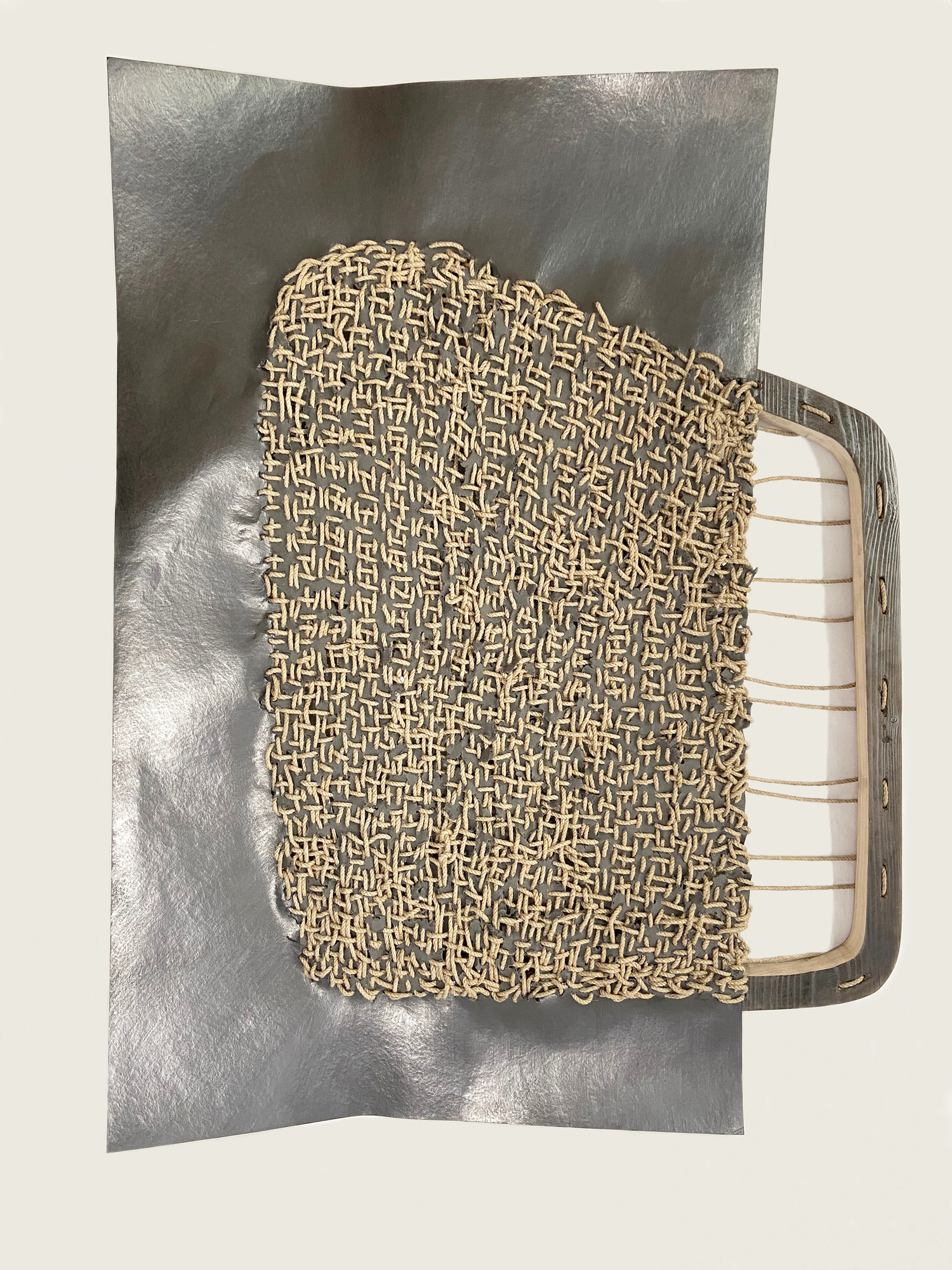

Whether considered as an object or as a material, rope offers a rich array of symbols and uses throughout history and across civilizations, fascinating by its universality and its capacity to connect cultures and eras. Crucial in the origins of geometry, it was used in the societal organization of the Incas in the form of quipus. In Japan, rope can signify the sacred nature of a place – shimenawa – or be used in martial arts to restrain a person – hojojutsu – with shibari as its erotic counterpart.
In the studio, rope serves as a tool for creation and a partner of the material. The act of tying, both a bond and a form of support, evokes a ritual. Knots resemble synapses, exchanging vital information and opening a field of interpretations on the creation of networks and connections.
Some pieces are complemented by external elements, true “support-grafts,” which interact with the corded work and literally support it, both in opposition and in complementarity. Contextualizing a piece, by selecting materials and techniques for these custom bases, enriches the work with an additional layer of dialogue: it is the beginning of a conversation between material, gesture, and meaning.
